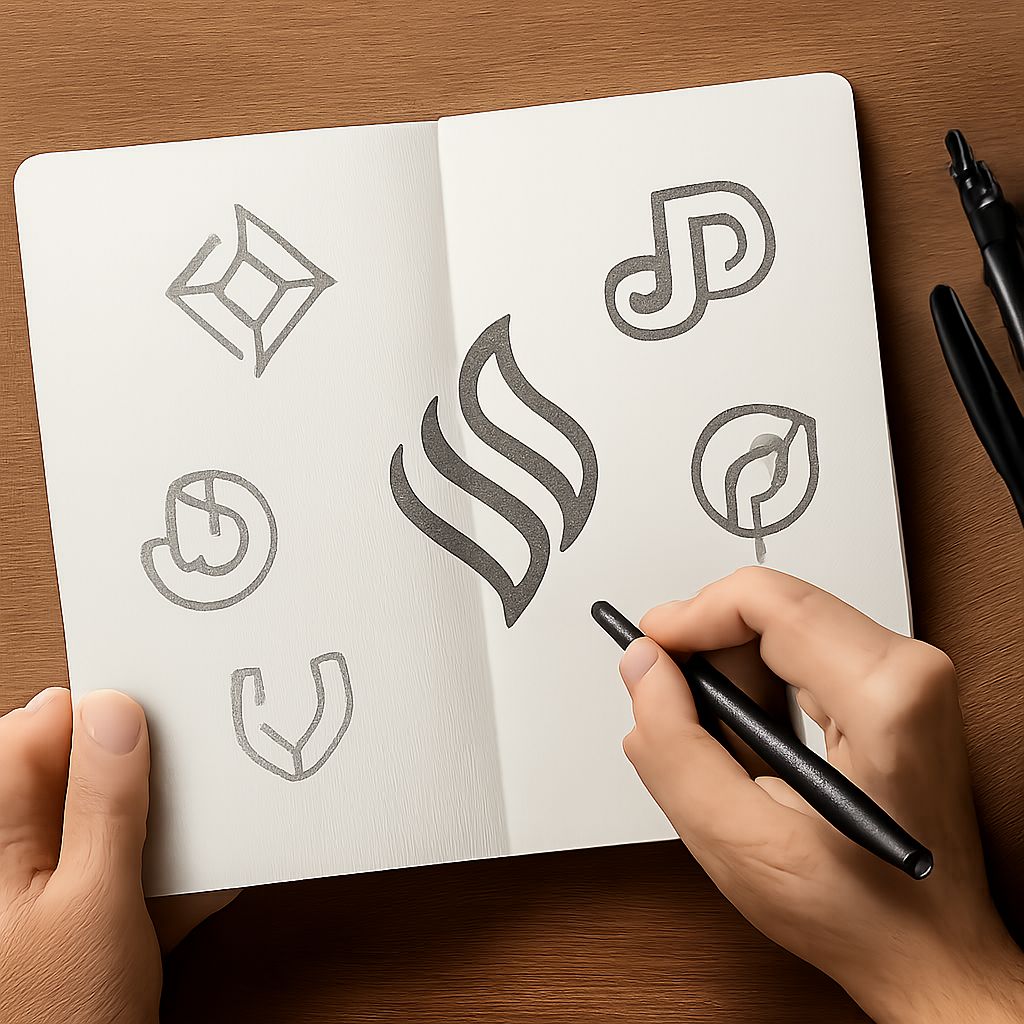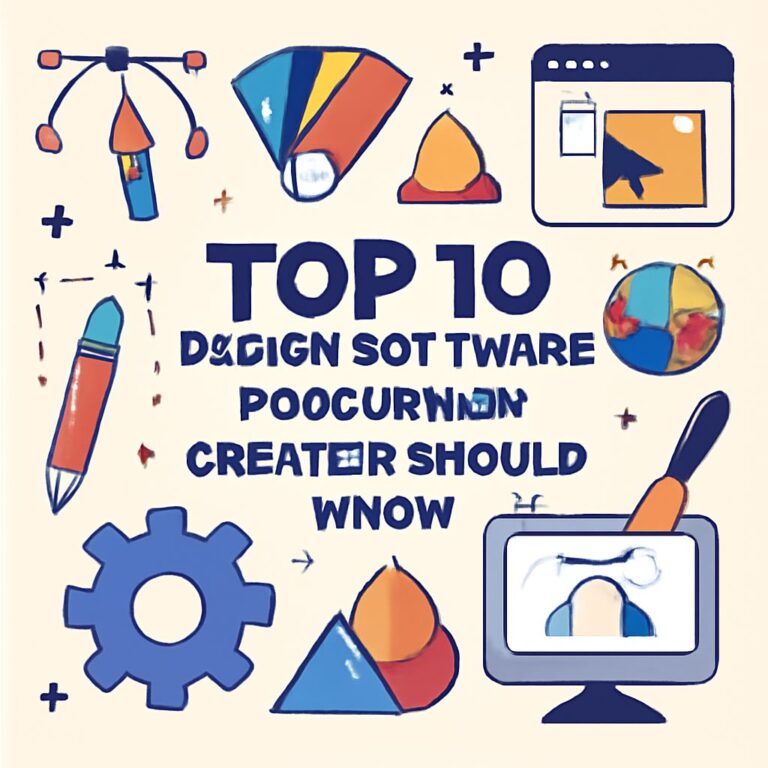Table of Contents
Understanding the Importance of Unique Logos
In the competitive business landscape, a unique logo serves as the visual cornerstone of a brand’s identity. It is not just a simple image but a representation of the brand’s values, mission, and the promise it makes to its customers. A logo must stand out and capture the essence of the company it represents. Furthermore, an effective logo can enhance brand recognition, foster customer loyalty, and help differentiate a company from its competitors.
The process of crafting a unique logo starts with understanding the brand’s core values and the message it intends to communicate. A well-designed logo is versatile enough to be used across various platforms—be it on business cards, websites, or social media—while maintaining its distinctiveness. A thoughtfully crafted logo can succinctly convey a brand’s essence in a way that resonates with the audience.
Key Elements of Logo Design
Creating a memorable logotype involves considering various elements that contribute to its overall impact. Each aspect must be strategically selected to align with the brand’s imagery, objectives, and target market.
- Simplicity: A logo should be uncomplicated and easily recognizable. Its simplicity allows for versatility and memorability. A simple design can also speak volumes without the clutter, making it easier to distinguish and remember.
- Relevance: The design must resonate with the brand’s target audience and communicate the intended message clearly. Relevant logos strike a chord with their audience by embodying the brand’s central themes and appeals.
- Color Psychology: Colors evoke emotions and convey meanings. Choosing the right color palette is crucial to logo effectiveness. Each color has its psychological impact—red can evoke excitement, while blue can convey trust. A strategic color choice can enhance brand message.
Step-by-Step Process for Crafting a Unique Logo
Research and Conceptualization
Every successful logo design begins with thorough research. Understanding industry trends, competitor brands, and the specific target audience is vital. This step involves gathering insights into what works in the market, the kind of messages and feelings that competitors are portraying, and identifying any gaps that your brand can fill uniquely. Furthermore, sketching initial concepts can help explore multiple ideas quickly and expressively. These sketches serve as a visual brainstorming session where the broad parameters of the design are outlined.
Design and Refine
Once a few concepts are shortlisted, the process moves to the digital phase. Here, tools like Adobe Illustrator or CorelDRAW are used to bring ideas to life. Designers test various typography options and experiment with different font styles to ensure the logotype stands out distinctively while harmonizing with the brand’s ethos. In this phase, it’s also important to consider the seamless integration of the logo’s visual elements to achieve a cohesive representation of the brand.
- Typography: The choice of font can make or break the logo’s effectiveness. Opt for fonts that reflect the brand’s personality, and consider how the interplay of text and visuals can enhance the logo’s expressiveness. A carefully chosen typeface can add a layer of depth to the visual identity.
- Scalability: Ensure the logo maintains clarity and visual appeal, whether on a business card or a billboard. This involves designing the logo in a vector format, ensuring it looks crisp and clear at any size. A scalable design avoids the pitfalls of distortion or loss of detail when the logo is resized.
Through iterative feedback cycles, the design is refined and optimized. Seeking input from peers, potential customers, and stakeholders can provide valuable perspectives that refine the design. This stage is crucial for ensuring the final logo aligns perfectly with the brand’s vision and audience expectations.
Common Mistakes to Avoid
While designing a logo, several pitfalls could undermine its effectiveness. By being mindful of these common mistakes, designers can enhance the likelihood of success for their creations.
- Overcomplicating the Design: Adding too many elements can overwhelm and dilute the logo’s message. An overloaded design might confuse rather than attract customers, detracting from the brand’s ownability and relevance.
- Ignoring Industry Trends: While a unique identity is essential, completely disregarding trends may result in an outdated look. Staying informed about shifts in what constitutes a modern and fresh design can aid in crafting a timeless logo.
- Not Testing Versatility: A versatile logo can adapt to various platforms, including mobile devices and merchandise. It is essential to test the logo across different mediums to ensure it retains its integrity and appeal regardless of where it is displayed.
Enhancing the Logo’s Lifespan
To ensure a logo remains effective over time, brands should periodically assess their visual identity. This can include minor enhancements or complete redesigns depending on changing market conditions and brand strategy.
FAQ
Why is simplicity important in logo design?
Simplicity ensures that a logo is easily recognizable and memorable, allowing it to convey the brand’s message quickly and effectively. A simple logo has a higher chance of resonating with the audience since its message is direct and unambiguous.
What role does color play in logo design?
Color influences perception and emotional response. It can be used to evoke specific feelings aligned with the brand’s values and identity. Utilizing color effectively requires understanding color theory and applying it strategically to reinforce brand characterization.
How is a logo tested for versatility?
A logo should be assessed in various sizes and backgrounds to ensure its clarity and effectiveness across all media outlets. This versatility testing involves displaying the logo on print, digital, and environmental media to analyze its performance and impact in different scenarios.
Can a logo evolve over time?
Yes, many brands choose to refine their logos as they grow or rebrand, ensuring they remain relevant in changing market conditions. Logo evolution can be a natural part of a brand’s lifecycle, reflecting new directions or modern sensibilities while maintaining a connection to the brand’s heritage.
What is the impact of a logo on branding?
A logo serves as the face of the brand and often is the first impression customers receive. It can significantly impact branding by enhancing brand loyalty, providing instant recognition, and solidifying brand identity in consumers’ minds. A compelling logo captures and encapsulates a brand’s essence, supporting the development of trust and familiarity.
In conclusion, mastering the art of unique logo creation is not merely about developing a visual symbol but about crafting a narrative encapsulated in a compelling visual form. As brands strive to stand out in a crowded marketplace, the development of a logo that is both aesthetically pleasing and strategically sound is a key competitive advantage.









